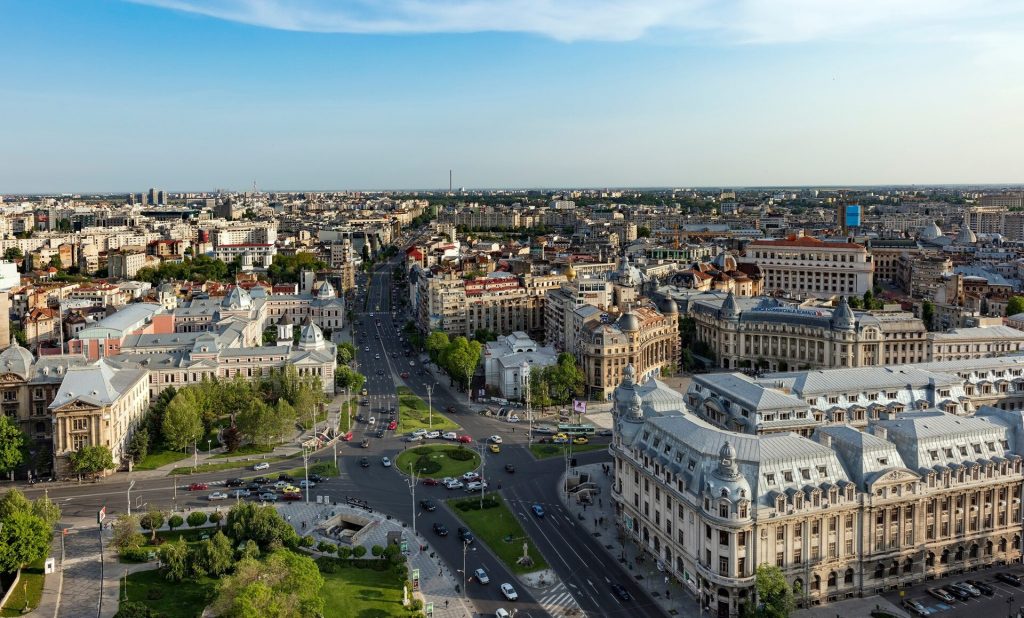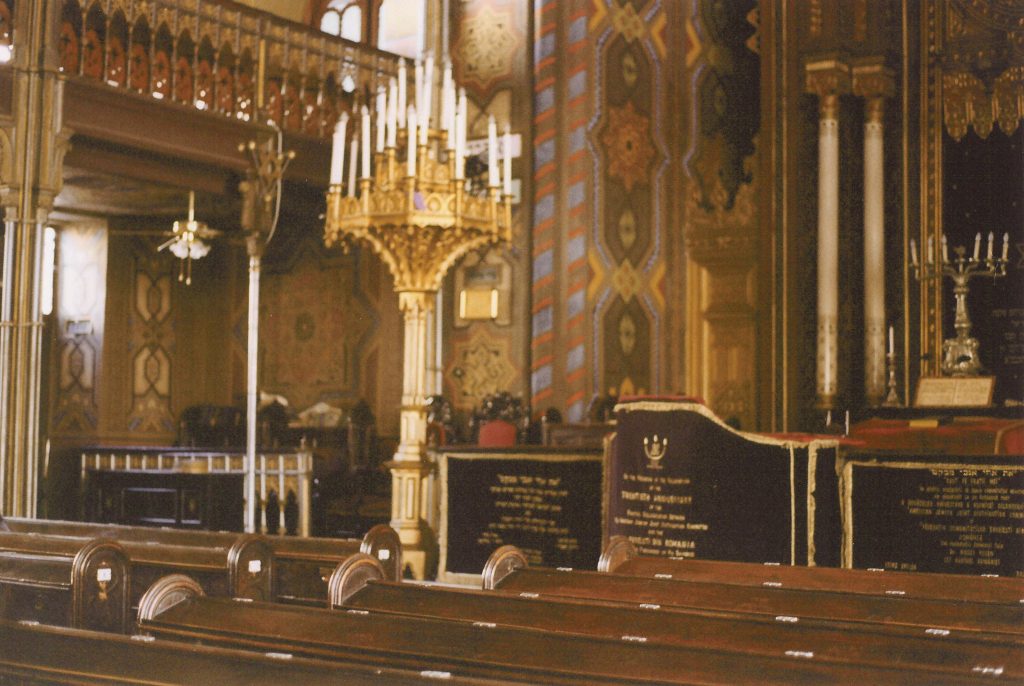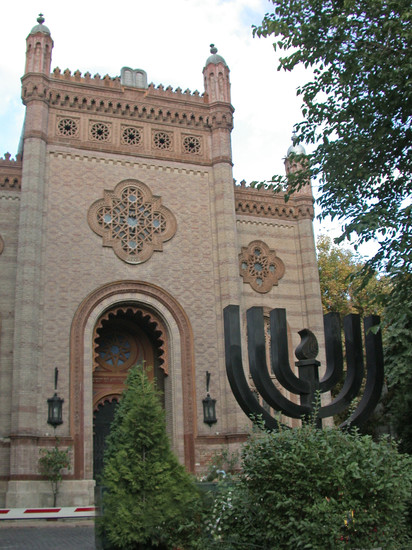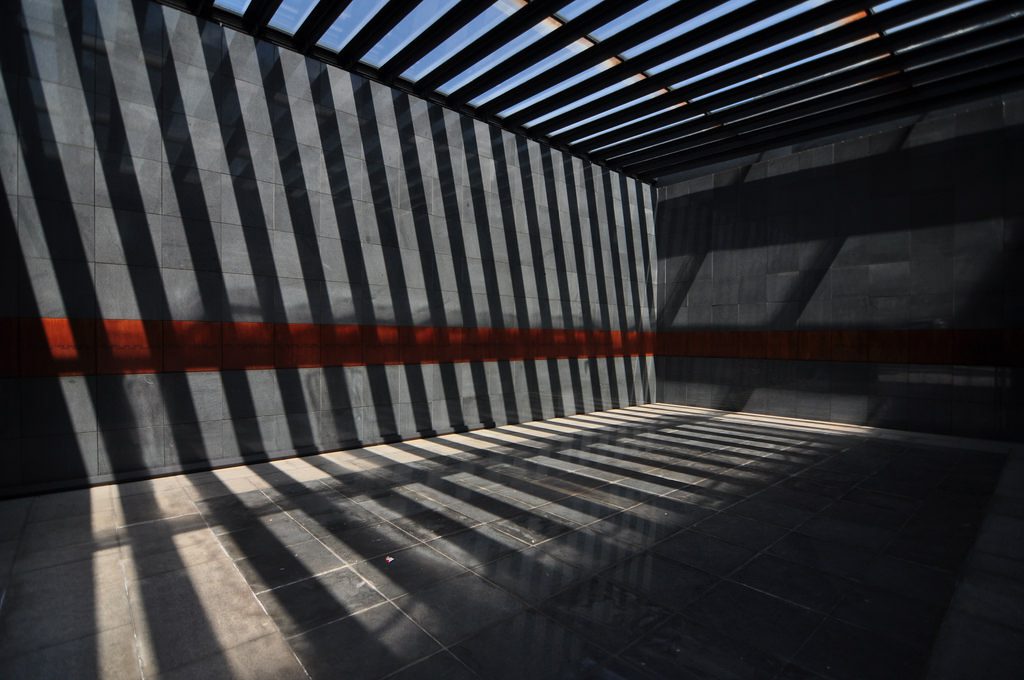
Jewish Bucharest has almost completely disappeared. Of a population estimated at 158,000 souls in 1948, there remain only 2,000 people today. Living across the four corners of the capital, they are doubtlessly too old or in too precarious an economic situation to contemplate emigration.
The old Jewish quarter
The old Jewish quarter was located near the Unirei (Union) Square on the other side of Sfanta Vineri Street. To the southeast, Dudesti and Vàcàresti streets resounded with the joys and color of Jewish life. These streets no longer exist. In their place stretches a vague, rubble-strewn terrain the locals call “Hiroshima”. Ceausescu reduced it all to nothingness in order to build a mad, improbable “City of the Future”. A lone house attests to the Jewish presence in these parts: the Jewish State Theater . This is where actors -non-Jewish ones, for that matter- continue to learn Yiddish and interpret works by the great jewish playwrights in the original language.
Synagogues
Few active synagogues remain in Bucharest. At the turn of the twentieth century, however, the city contained at least sixty-six of them, Sephardic as well as Ahkenazic.

The Choral Temple remains the city’s most important religious site today. Built in 1866 according to a design by the architects Endele and Freiwald in the Viennese style (just like the synagogue on Dohány Street in Budapest), it was rebuilt in 1933 and then in 1945, after it was vandalized by the Iron Guards during a January 1941 pogrom.
The Grand Synagogue , which catered to the Ashkenazic community, was built in 1846 by a congregation of Polish Jews. It stands on Vasile Adamache Street, one of the oldest streets in the capital, alongside miraculously preserved low houses. In 1992, this synagogue was transformed into a museum. Here you will find religious objects, documents, and precious incunabula that retrace the history of Romania’s former Jewish communities. In the center sits a statue in honor of the tens of thousands of Trans-Dniestrian Jews, victims of pogroms and deportations. During the war, 200 000 Transylvanian Jews were sent to Auschwitz by the Hungarian authorities, never to return. The Mamulari Synagogue hosts as well a Jewish Museum.

Located in a lively street overlooking Bulevardul Maghero, the Yeshoah Tova synagogue is Bucharest’s oldest place of worship, dating back to 1822. Services are held at the entrance on the Sabbath and on Saturday mornings at 9am.
The cemetery
The austere Sephardic cemetery Calea Serban Vodà also bears the scars of the pogroms and mass exterminations suffered by Romanian Jews in Moldavia, Bukovina, Bessarabia, and Trans-Dniestra. Another Sephardic cemetery is located in the Giurgiului district. Finally, the Filantropia cemetery houses a small oratory.
Jewish life today
A visit to the sober Shoah Memorial is advised. The museum opened in 2009, as Romania only very recently started acknowledging publicly its responsibility in the Shoah.

The town’s community centre offers weekly activities and also runs the country’s only digital Jewish radio station: Radio Shalom Romania. The dynamic Federation of Jewish Communities of Romania publishes -in Romanian, English, and Hebrew- the excellent bimonthly Réalitatea evreascà (Jewish reality). The catalog of Hasefer , perhaps the only remaining Jewish publishing house in eastern and Central Europe, contains works by Sholem Aleichem, Martin Buber, Bernard Malamud, and Simon Dubnov, as well as those by Romanian-born authors Elie Wiesel, Carol Lancu, and Mihail Sebastian.